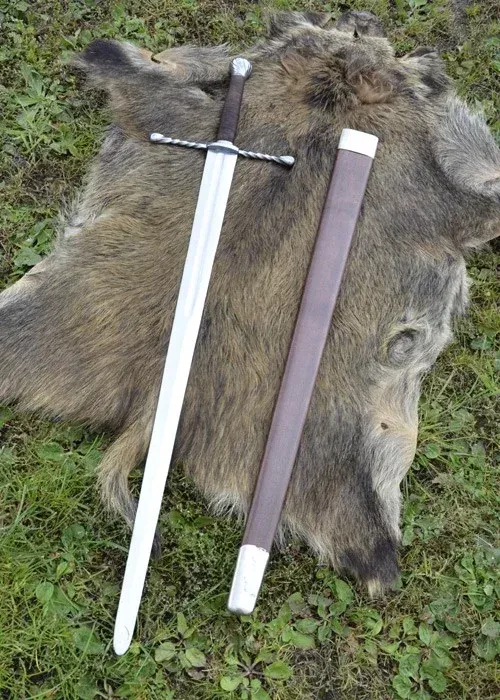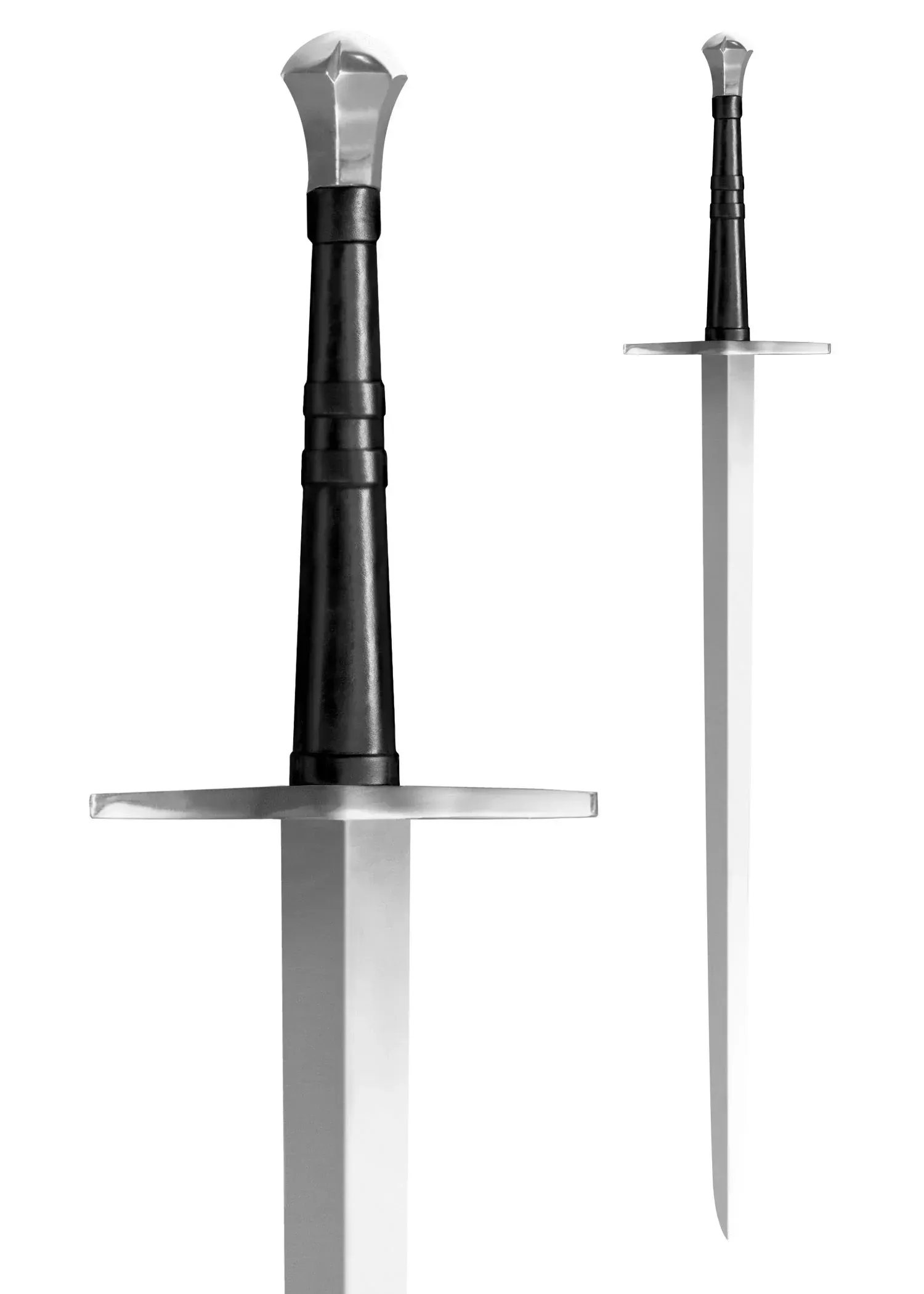What is a Bastard Sword?
The bastard sword, also known as the hand-and-a-half sword, is one of the most iconic medieval weapons of Europe. Its unique design and versatility make it a standout tool for both battles and duels. This type of sword, which combines the characteristics of a short sword and a long sword, allows for use with one or both hands, offering flexibility in both attack and defense. Below, we delve into its origin, characteristics, design, and historical use in detail.

Origin and Etymology
The bastard sword first appeared in the late 13th century and remained in use until the mid-16th century. Its name derives from the "hybrid" nature of this weapon, as it combines elements of two-handed swords, which are longer and heavier, with short swords, which are lighter and more maneuverable. In some historical texts, it is also referred to as a "hand-and-a-half sword," highlighting its ability to be wielded either with one hand or both.
During its heyday, it was highly valued on battlefields and in tournaments, used by both knights and mercenaries due to its adaptability to the challenges of hand-to-hand combat or organized group battles.
Characteristics of the Bastard Sword
- Long, Straight Blade: Its straight, sharp blade enables efficient cuts and precise thrusts. This feature made it ideal against enemies with light armor or no protection.
- Adapted Grip: The grip of the bastard sword is longer than those of other short swords, allowing for a two-handed hold that provides greater power in strikes.
- Resilient Materials: Made of high-carbon steel, these swords were notable for their durability and resistance to heat, impact, and wear.
- Battlefield Versatility: In addition to being used as a sword, it could also be employed to strike with the guard, pommel, or even as a spear in certain tactical situations.
- Advanced Technique: Its handling required skill, utilizing technical stances from the era such as "the cat," "the knight," and "the lady." Additionally, attacks with the pommel or guard added a wider array of combat strategies.

Design and Structural Details
The design of the bastard sword reflects both functionality and aesthetics. Below, we outline the details that define this weapon:
- Grip: Usually covered in black leather, it measures around 17 cm and features a steel spacer ring that facilitates two-handed handling. This design increases stability during strikes.
- Pommel and Guard: Both elements were often aged to provide a rustic and authentic appearance. They served a dual purpose as decorative features and functional components for balance and protection.
- Sheath: To protect and transport the sword, the sheaths were decorated with steel details, combining utility and style.
Historical Use on the Battlefield
The bastard sword played a crucial role in historical conflicts, especially during the 15th and 16th centuries. Its popularity spread throughout Western Europe, particularly in battles such as the famous Battle of Bosworth, where it was used by both the House of York and the House of Lancaster. Its versatility and adaptive design made it an indispensable weapon for both individual skirmishes and formation combat.
Beyond its role in war, this type of sword was also employed in duels and knightly training. Some treatises from the era recount its strategic use, often taught under the guidance of experienced masters-at-arms.
Highlighted Elements
| Element | Description |
| Blade | Long, straight, and double-edged. |
| Grip | Adapted for one-handed or two-handed use. |
| Pommel | Functional and decorative counterweight. |
| Material | Made of high-carbon steel. |
| Versatility | Suitable for attack and defense in various strategies. |
















